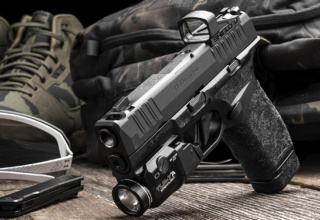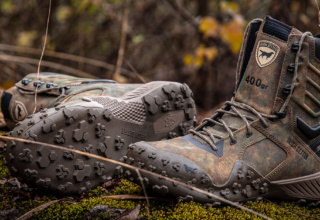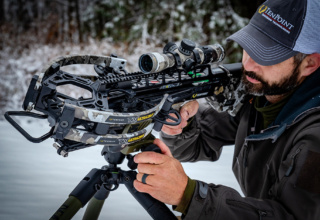Firearm cleaning tools have a way of getting out of hand. Here’s a simple solution to make life at the bench a lot easier.
by Rob Reaser
Perhaps it has never happened to you, but if you are a typical hunter or a firearm enthusiast, chances are you have probably stopped and asked yourself, “Is this the right brush for this gun?”
Yep…most of us have been there, likely on several occasions.
Proper firearm cleaning requires the use of caliber-specific jags, brushes, and cleaning patches. The challenge is keeping them all organized so that you don’t mistakenly use the wrong one. Insert a cleaning brush into a bore and you’re in it until you reach the other side. If you realize you used a brush that’s too big and you try to back it out, it will get stuck, and then you’re snookered.
So, how do you store your jags and brushes? A lot of folks toss their jags, brushes, adapters, mops, and so forth into a catch-all drawer or slot in their gun box with no organization whatsoever. That’s fine if you only have a few guns chambered in distinct caliber dimensions, but if you’re running firearms with ammunition calibers that are not readily distinguished with the naked eye, you’re taking a big gamble.
Because jags, brushes, and mops are caliber-specific (or at the least, cover a narrow range of caliber sizes), keeping them separate from other size tools is essential for gun cleaning efficiency, for ensuring barrels are properly cleaned, and to prevent tools from getting stuck in your barrel.
To better organize our gun-cleaning operation, we’ve started using the Jag & Brush Cases from MTM-Case Gard. These cases measure 3.4×5.11×1.24 inches and feature a clamshell design. There are three compartments in the transparent case, providing plenty of room to store jags, brushes, mops, and cleaning rod adapters. The hinged lid has a snap-lock closure to keep the items secured in the box.
Since we have several rifles, shotguns, and handguns of various chamber sizes, we’ve started picking up a few of these cases whenever we are at a sporting goods store. They only cost $4-$5 each, so we’ll get one or two here and there and our wallet is none the wiser. Once home, we’ll load our caliber-specific cleaning tools in a box and label it so we know exactly what’s inside.
Another benefit of using similar-sized boxes like these is that their uniform dimensions allow them to be stored efficiently in a range box or in a drawer on our work bench. When we need to take a cleaning set to the range, we simply grab the box we need and go.
If you have a drawer full of loose, unidentified jags and brushes and are no longer sure which ones fit what (the ones we get never seem to be marked by caliber), you can use a caliper to measure their diameters and sort them out. Jags will be slightly undersized relative to the bore they are intended for (to provide room for the cleaning patch) while cleaning brushes will be a tad oversized.
While we would love to give you specific dimensions to help guide you, it seems manufacturers can’t settle on standard sizes. For example, we measured the diameter of two different .22-caliber piercing tip jags made by two separate manufactures— J. Dewey and Tipton. The J. Dewey jag measured .167 inches in diameter while the Tipton dialed in at .189 inches. That may not seem like much, but when you’re stuffing a patch of unknown thickness down a bore with unknown fouling buildup, that .022 inches can be the difference between a proper cleaning and a “too tight” jag/patch combo, depending on the thickness of the patch used.
This is why it is sometimes a good idea to test different jag-and-patch combinations to ensure you have a pairing that fits tight enough to get the fouling out of the barrel but not so tight as to squeeze out all the solvent or put undue pressure on the cleaning rod.
Speaking of patches, here is another item that tends to get tossed willy-nilly into a box or bag.
As with jags and brushes, patches are sized to work with specific caliber ranges. Use a patch that is too small and you can’t effectively clean the barrel; too large and the patch either can’t be pushed through or will be so tight that all the solvent will squeeze out of the fibers as it pushes through the chamber and into the bore. You want that solvent to stay in the patch so it will coat the bore and work on the fouling.
Fortunately, it only takes a few patch sizes to cover most of the popular calibers. We recommend cotton patches purchased in bulk to save money. For storage, we’ll transfer a handful from the bulk bag to smaller plastic zip-closure bags and label the bags accordingly. Again, this makes it easy to grab the correct-size patches we need for a cleaning job, and it is convenient for tossing them into our gear bag when we head to the range.
No one enjoys cleaning their guns, and it’s a task made infinitely more frustrating if your essential tools are disorganized and not readily identifiable. Using a storage system such as the MTM Case-Gard Jag & Brush Case and segregating your bore patches by caliber range will certainly make the job a lot easier and less frustrating.



















